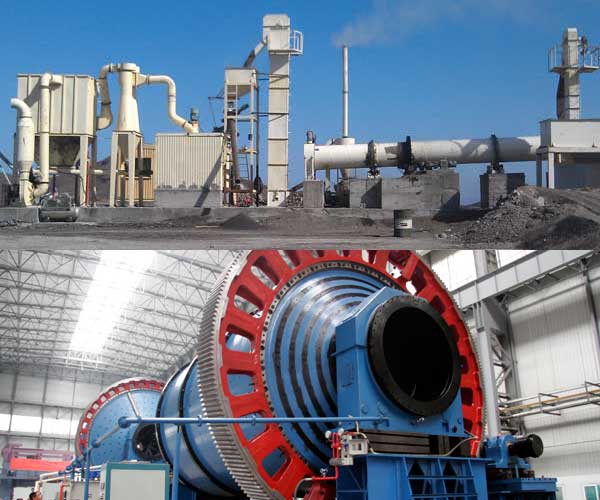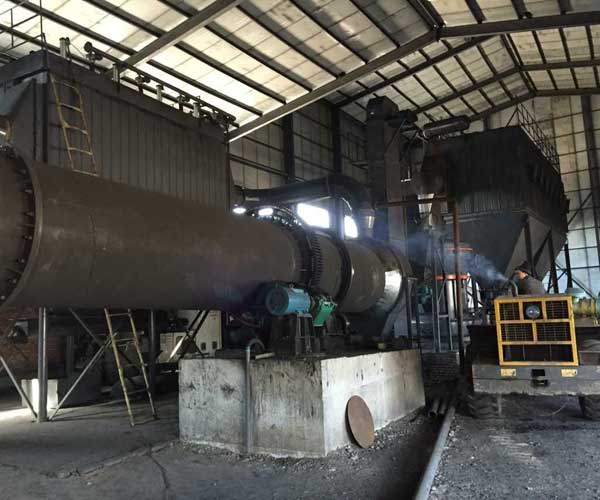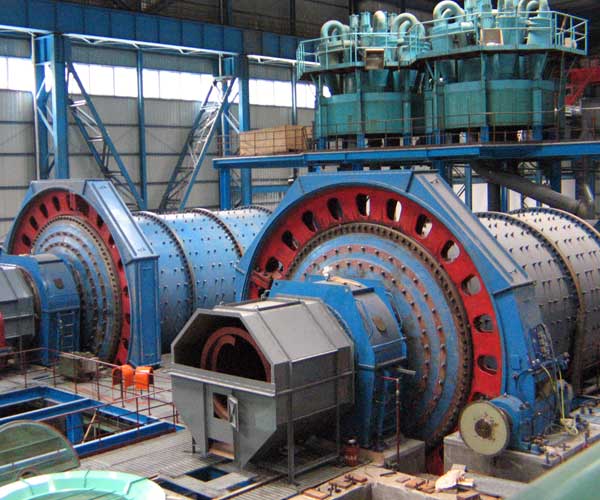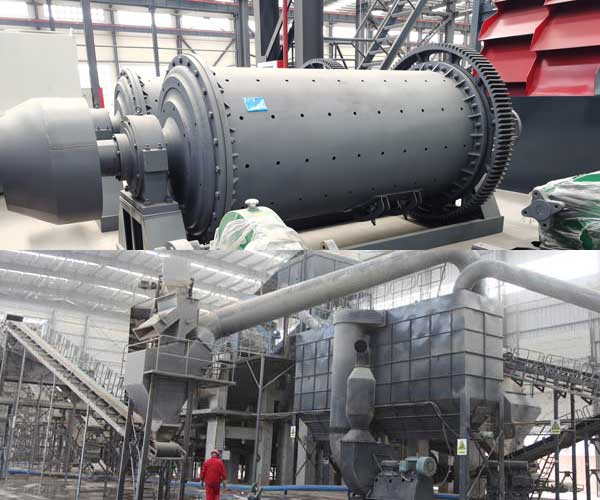
Wet grinding and dry grinding are distinct techniques employed in various industries to achieve different grinding outcomes. Wet grinding utilizes a liquid medium, producing finer particle sizes and facilitating dispersion, while dry grinding involves the absence of liquid, leading to coarser particles.
24 Online Service

Dry grinding is a widely used industrial process that involves reducing the particle size of solid materials without the addition of any liquid or solvent. It is a crucial operation in various industries such as mining, cement production, pharmaceuticals, and food processing.
Dry grinding primarily involves the mechanical fragmentation of solid materials through the application of external forces. The process utilizes specialized equipment to reduce the particle size of the material, resulting in a fine powder or granular product. Unlike wet grinding, dry grinding does not require the use of liquid media, making it advantageous in certain applications.
The heart of the dry grinding process, grinding mills are machines designed to break down solid materials into smaller particles. Common types of grinding mills include ball mills, rod mills, and vertical mills. These mills utilize rotating containers or cylinders, along with grinding media such as balls or rods, to facilitate the grinding process.
In some cases, preliminary crushing of the material is necessary before it enters the grinding mill. Crushers, such as jaw crushers, cone crushers, or impact crushers, are employed to reduce the initial size of the material, making it more suitable for grinding.
After the grinding process, classifiers are used to separate the ground particles according to size. This ensures that the desired particle size distribution is achieved and that oversized particles are returned to the grinding mill for further processing.
Dry grinding is extensively used in the mining industry for processing minerals such as gold, copper, iron ore, and coal. It enables the liberation of valuable minerals from the ore matrix, facilitating their subsequent separation and extraction.
The cement manufacturing process involves dry grinding of raw materials such as limestone, clay, and silica to produce a fine powder known as raw meal. This raw meal is then heated in a kiln to form clinker, which is further ground with additives to produce cement.
Dry grinding is employed in the pharmaceutical industry to produce powders of active pharmaceutical ingredients (APIs) and excipients. The fine particle size obtained through dry grinding facilitates better dissolution and absorption of the drug.
Dry grinding typically requires less energy compared to wet grinding since there is no need for liquid media and associated equipment.
Dry grinding often results in a more uniform particle size distribution, enhancing the product’s quality and performance.
Wet grinding processes can cause corrosion and wear on equipment due to the presence of liquid media. Dry grinding eliminates this concern, leading to longer equipment lifespan and reduced maintenance costs.
Dry grinding can generate a significant amount of dust, which may pose health and safety risks. Proper ventilation systems and personal protective equipment (PPE) must be employed to mitigate these concerns.
The friction generated during dry grinding can result in elevated temperatures, which may affect the properties of certain materials. Cooling systems or intermittent grinding may be necessary to control temperature rise.
Some materials are prone to moisture absorption, leading to difficulties in dry grinding. Pre-drying the material or using specialized equipment may be required in such cases.

In various industries, the process of grinding plays a crucial role in the production of numerous materials. Grinding refers to the mechanical reduction of particle size, typically through the application of force or friction. While dry grinding is a widely known technique, another significant method is wet grinding.
Wet grinding is a particle size reduction process that involves the use of a liquid medium, such as water or specific chemical solutions, to facilitate the breakdown of solid materials. This technique offers distinct advantages over dry grinding, as the presence of a liquid medium provides several unique benefits. The wet grinding process is commonly used to refine or homogenize materials, create suspensions, or produce fine powders with improved characteristics.
In wet grinding, the choice of grinding media is crucial. Typically, grinding media such as steel balls, ceramic beads, or glass particles are added to the mill or grinding chamber. The selection of media depends on the material being processed, desired particle size, and other factors. The grinding media aids in the comminution process by imparting mechanical forces and ensuring efficient particle size reduction.
Wet grinding can be performed using various types of milling equipment, including ball mills, attritor mills, and bead mills. These machines utilize different mechanisms to promote particle breakage and dispersion. For instance, ball mills contain rotating cylinders filled with the grinding media, which tumble and collide with the material, resulting in particle size reduction.
The liquid medium employed in wet grinding serves multiple purposes. Firstly, it acts as a lubricant, reducing friction and preventing excessive wear of the grinding media and mill components. Secondly, the liquid medium provides cooling, dissipating the heat generated during grinding. Additionally, it facilitates the transport of particles, aiding in the dispersion and distribution of the ground material.
Wet grinding enables the production of narrower particle size distributions compared to dry grinding methods. The liquid medium helps to break down agglomerates and ensure a more uniform distribution of particles, resulting in a finer and more consistent product.
The presence of a liquid medium in wet grinding helps to reduce the energy consumption during the process. The liquid acts as a cooling agent, preventing excessive heat build-up and reducing energy losses due to friction. Consequently, wet grinding can be more energy-efficient than dry grinding, leading to cost savings in industrial operations.
Wet grinding offers greater control over the final product’s characteristics. The addition of liquid media allows for better manipulation of factors such as particle size, shape, and surface properties. This control is particularly beneficial in industries where precise control over the end product is critical, such as pharmaceuticals, ceramics, and pigments.
Wet grinding is widely employed in pharmaceutical manufacturing to create suspensions, improve drug dissolution rates, and enhance bioavailability. The technique enables the production of fine drug particles, increasing the surface area available for dissolution and improving the efficacy of orally administered medications.
Wet grinding is extensively utilized in the chemical industry for the production of pigments, dyes, and specialty chemicals. The process aids in achieving consistent particle size distributions, enhancing color strength, and improving the dispersion of chemicals in liquid or solid matrices.
Wet grinding is employed in food processing applications to produce pastes, emulsions, and dispersions. It is commonly used in the production of sauces, dressings, and beverages, where the consistency and texture of the final product are crucial.

Grinding is a fundamental process employed in various industries, such as mining, food processing, pharmaceuticals, and ceramics. It involves reducing solid materials into smaller particles through mechanical forces. Two primary methods of grinding, namely wet grinding and dry grinding, are widely utilized to achieve different outcomes.
Before delving into the disparities between the two grinding techniques, let’s establish a clear understanding of wet grinding and dry grinding.
Wet grinding involves the use of liquid or water-based substances as a lubricant and cooling agent during the grinding process. The solid material to be ground, along with the liquid, forms a slurry. The slurry is then subjected to mechanical forces, such as attrition, impact, or compression, resulting in particle size reduction.
In contrast, dry grinding refers to the grinding process conducted without the addition of any liquid or moisture. Solid materials are ground using mechanical forces alone, such as compression, impact, or shear. Dry grinding typically generates a fine powder or granular product.
The most prominent distinction between wet grinding and dry grinding lies in the presence or absence of a grinding medium. Wet grinding employs a liquid medium, usually water or a solvent, whereas dry grinding does not require any liquid medium.
Wet grinding often leads to finer particle sizes compared to dry grinding. The addition of liquid during wet grinding helps to reduce the forces of attrition and agglomeration, leading to better dispersion and smaller particle sizes. Dry grinding, on the other hand, tends to produce coarser particles.
Dry grinding generally requires less energy compared to wet grinding. The energy expenditure in wet grinding is primarily attributed to the need for liquid transportation, increased frictional forces, and the evaporation of liquid during the process. Dry grinding, being a more direct process, consumes less energy.
The grinding equipment utilized for wet and dry grinding varies significantly. Wet grinding systems often incorporate specialized mills, such as ball mills, vertical stirred mills, or attritors, which are designed to handle slurries effectively. Dry grinding, on the other hand, typically involves hammer mills, pin mills, or air classification mills.
Wet grinding is commonly used in industries such as paints, inks, pigments, and dyes, where fine particle sizes and uniform dispersion are crucial.It is also employed in the pharmaceutical industry to enhance drug dissolution rates and improve bioavailability.Wet grinding is advantageous for grinding fibrous and heat-sensitive materials, as the liquid medium provides cooling and prevents thermal degradation.
Dry grinding finds extensive use in mineral processing, cement production, and chemical industries.It is well-suited for grinding brittle materials, such as ores, minerals, and ceramics, where water or liquid additives may cause undesirable reactions.Dry grinding is often employed in the production of powdered spices, coffee beans, and grains.
Wet grinding requires proper handling and disposal of the liquid waste generated, which may add complexity and cost to the process.
Dry grinding may result in the generation of dust, necessitating adequate dust control measures and safety precautions.
The choice between wet and dry grinding depends on the specific requirements of the application, the material being processed, and economic factors.
Our Projects
Copyright © ZENITH, All Right Reserved.
